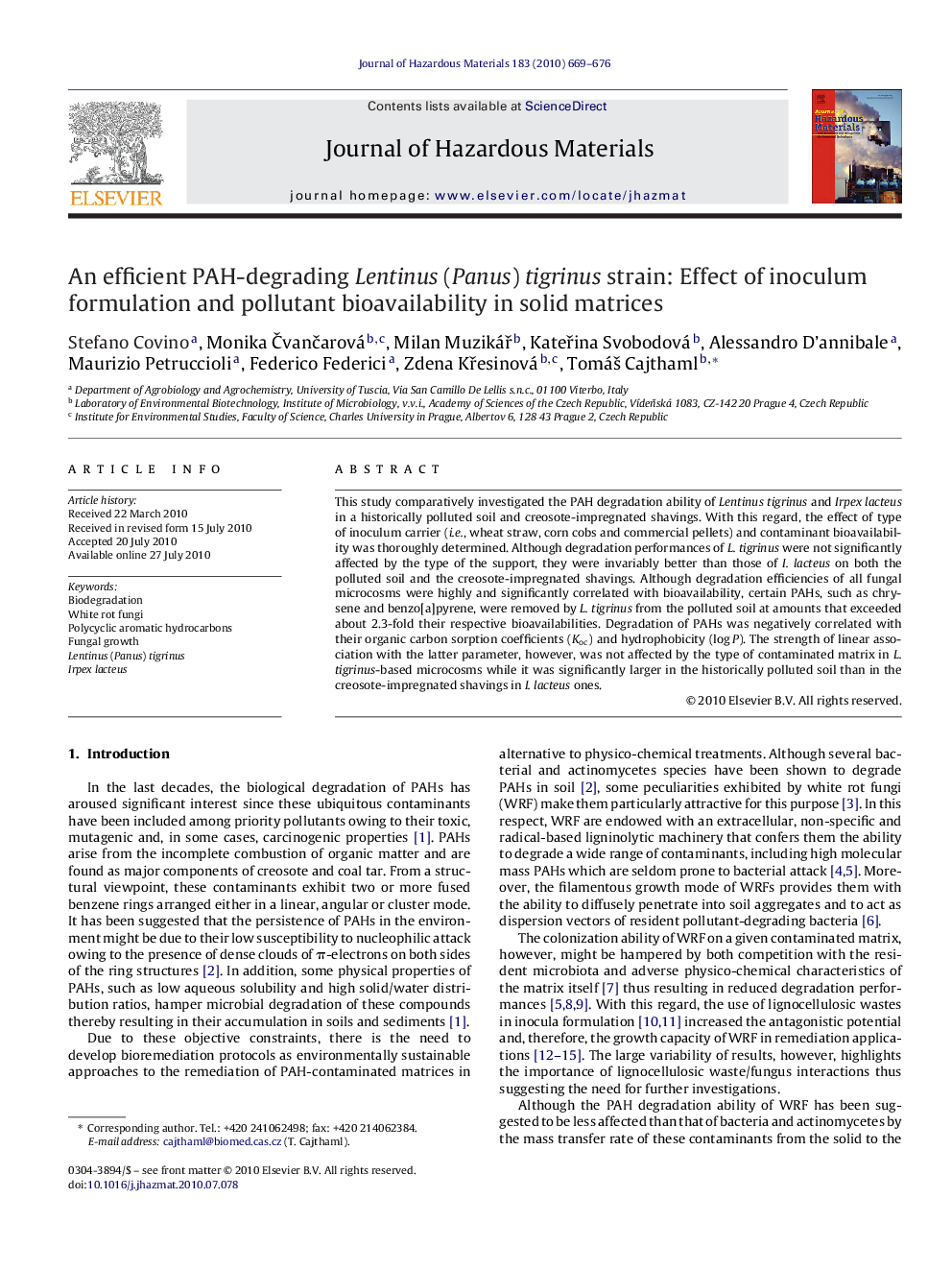| Article ID | Journal | Published Year | Pages | File Type |
|---|---|---|---|---|
| 579576 | Journal of Hazardous Materials | 2010 | 8 Pages |
Abstract
This study comparatively investigated the PAH degradation ability of Lentinus tigrinus and Irpex lacteus in a historically polluted soil and creosote-impregnated shavings. With this regard, the effect of type of inoculum carrier (i.e., wheat straw, corn cobs and commercial pellets) and contaminant bioavailability was thoroughly determined. Although degradation performances of L. tigrinus were not significantly affected by the type of the support, they were invariably better than those of I. lacteus on both the polluted soil and the creosote-impregnated shavings. Although degradation efficiencies of all fungal microcosms were highly and significantly correlated with bioavailability, certain PAHs, such as chrysene and benzo[a]pyrene, were removed by L. tigrinus from the polluted soil at amounts that exceeded about 2.3-fold their respective bioavailabilities. Degradation of PAHs was negatively correlated with their organic carbon sorption coefficients (Koc) and hydrophobicity (log P). The strength of linear association with the latter parameter, however, was not affected by the type of contaminated matrix in L. tigrinus-based microcosms while it was significantly larger in the historically polluted soil than in the creosote-impregnated shavings in I. lacteus ones.
Related Topics
Physical Sciences and Engineering
Chemical Engineering
Chemical Health and Safety
Authors
Stefano Covino, Monika ÄvanÄarová, Milan MuzikáÅ, KateÅina Svobodová, Alessandro D'annibale, Maurizio Petruccioli, Federico Federici, Zdena KÅesinová, TomáÅ¡ Cajthaml,
